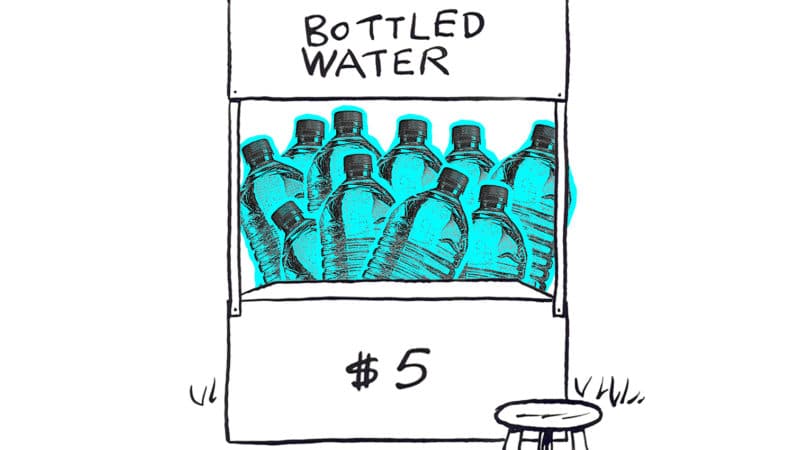Florida has once again found itself leading the country in homelessness with an almost 20% increase from last year
By McKenna Harford
Homelessness in Florida is up 19% in 2023 compared to last year, with more than 30,000 unhoused people across the state.
According to the annual report from Florida’s Council on Homelessness, the 2023 Point in Time count found 30,809 unhoused people, with more than half of them being unsheltered. The Point in Time count provides an estimation for the number of people, both sheltered and unsheltered, in the state based on a count during one night in January.
The report found that Charlotte, Collier and Lee counties, where Hurricane Ian caused significant damage, saw homelessness go up 70% from 2022. Additionally, rising rents and a lack of housing supply during a time of increasing population continue to contribute significantly to increasing homelessness.
“Supply and demand being fundamental market factors, this is causing housing costs to increase at extraordinary rates,” council chairperson Shannon Nazworth said in a letter to Gov. Ron DeSantis. “That factor, coupled with population growth, has significantly increased pressure on the rental housing market.”
Despite already having the highest percentage of rent-burdened residents in the country, Florida rents went up an average of $170 between January 2022 and January 2023.
Of the people experiencing homelessness, 51% are unsheltered, 24% are families, 28% are older than 55, 15% are 18 or younger and 20% are chronically homeless. Florida’s numbers follow a national trend of increasing homelessness year over year since 2017, per the National Alliance to End Homelessness.
Other contributing factors the report names include a decline over the last five years in available shelter beds, the return of evictions following the pause during the pandemic and community aversion to dense housing projects, known as a “Not in My Backyard” mentality.
To tackle homelessness in Florida, the report recommends four actions: promote collaboration between services; leverage federal funding for developing housing and expanding supportive services; continue to support Housing First programs; and encourage and incentivize local government to build affordable housing.
“Housing First is an evidence-based best practice helping households move into stable permanent housing as quickly as possible,” the report says. “This approach is guided by the belief that people need basic necessities like food and a place to live before attending to anything less critical, such as getting a job, budgeting properly, or attending to substance use issues.”
Earlier this year, DeSantis signed into law the Live Local Act, which dedicates $700 million to affordable housing solutions. The state legislature also approved $16.8 million in grants for rental assistance and permanent supportive housing.
The council’s report thanks the state for the investments, which it says will be crucial to addressing the housing crisis, and encouraged further state support, citing a 2021 needs assessment that estimates it would cost over $36 billion to build the number of supportive and affordable housing units needed in the state.
“The Council recognizes the achievements of Florida in affordable housing funding and acknowledges the importance of continuing to build upon these successes,” the report says. “However, it is imperative the State of Florida dedicate sufficient resources to address the pressing issue of housing affordability for extremely low-income households, those experiencing homelessness, and persons with special needs. The lack of housing affordable to those households not only poses a significant challenge for vulnerable populations but also impacts the overall well-being of communities.”
The report is also hopeful that the Live Local Act will remove some of the zoning and land use regulation barriers that existed for building affordable housing by allowing mixed-use residential and multi-family housing in commercial, industrial and some mixed-use areas, so long as 40% of the units are income-restricted for at least 30 years.
Threading through the report’s recommendations is the theme of collaboration between government on all levels and nonprofit resources working on housing and homelessness solutions.
“A person should not have to solely rely on the homelessness system of care to address their housing stability needs; instead housing instability and risk of homelessness should be discovered and addressed upon entry into many systems of care, so that appropriate resources can be paired with the household needing assistance immediately, decreasing their likelihood of falling into longterm homelessness,” it says.



